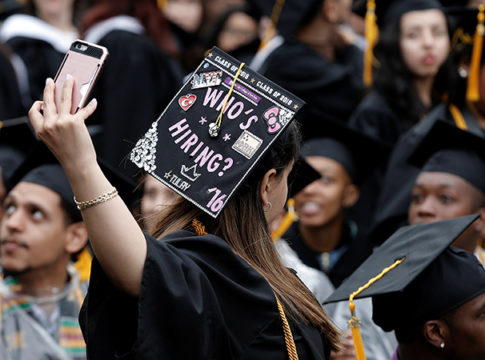Lifting the veil on the complex world of teacher debt
Experts offer alternative plan as the Trump administration looks to cut loan forgiveness programs
June 8, 2017—The Trump administration’s recently released 2018 budget proposing the elimination of student loan forgiveness programs has elicited panic from public workers—including more than half a million teachers—who count on such programs to secure their financial future. With Congress poised to consider the proposal, as well as a reauthorization of the Higher Education Act, Jason Delisle of the American Enterprise Institute and independent consultant Alexander Holt examine the patchwork of overlapping programs, contradictory regulations, and expensive subsidies that comprise the world of student loans and debt forgiveness for teachers. In an analysis for Education Next, they conclude that the current system is failing teachers, driving up the demand for expensive graduate degrees, and increasing the nations’ debt burden, and suggest an overhaul is in order.
Of the $107 billion borrowed last year in student loans, 90% came from the federal government. Sixty-seven percent of students pursuing an education degree borrowed federal student loans in 2012, accruing an average of $26,792 in debt for an undergraduate education degree. Between 2000 and 2012, the debt accrued by education majors with a master’s degree nearly doubled from $26,650 to $48,685 (see figure).
Aspiring and current teachers have access to four different types of loans, as well as up to four loan forgiveness programs, introduced piecemeal by Congress over decades. Due to the haphazard nature of their creation, these loan forgiveness programs have several flaws, say Delisle and Holt:
• The programs have competing rules. For example, teachers who take advantage of the Stafford Teacher Loan Forgiveness program to access up to $17,500 in loan forgiveness after five years of payments will unwittingly reset the clock on the more generous Public Service Loan Forgiveness Program, which forgives all outstanding debt held by teachers after 10 years of reduced payments tied to the borrower’s income.
• The programs are difficult to access and navigate. Benefits do not automatically kick-in once borrowers become eligible. Teachers also must re-enroll for income-based plans each year, track each loan type against their respective forgiveness qualifications, and submit paperwork to the correct institution (Department of Education or college attended).
• The programs make taxpayers foot the bill when teachers pursue expensive graduate degrees, increasing government debt without adding value. The percentage of teachers with a master’s degree grew from 42% in 2000 to 48% in 2012. Under the Public Service Loan Forgiveness Program, every dollar that a typical undergraduate education major who becomes a teacher borrows for graduate school ends up being forgiven. Unfortunately, say Delisle and Holt, “An overwhelming amount of research has shown that teachers who have master’s degrees are no more effective than those who do not.”
The authors question whether loan forgiveness programs for teachers are necessary or effective, but explain that there are still better ways to deliver the same benefits. Noting that debt relief is “a roundabout way of subsidizing income,” they explain that a federal income-tax credit for teachers has advantages over providing debt relief. “Such credits could do all of the things loan-forgiveness programs are supposed to, such as boost teachers’ pay, offer an incentive to stay in the profession, and transfer federal resources to local schools. But they would free teachers from complicated, competing rules and regulations.”
To receive an embargoed copy of “The Tangled World of Teacher Debt: Clashing rules and uncertain benefits for federal student-loan subsidies” or to speak with the authors, please contact Jackie Kerstetter at jackie.kerstetter@educationnext.org. The article will be available Tuesday, June 13 on www.educationnext.org and will appear in the Fall 2017 issue of Education Next, available in print on August 30, 2017.
About the Authors: Jason Delisle is a resident fellow at the American Enterprise Institute. Alexander Holt is an independent consultant in Washington, D.C.
About Education Next: Education Next is a scholarly journal committed to careful examination of evidence relating to school reform, published by the Hoover Institution at Stanford University and the Harvard Program on Education Policy and Governance at the Harvard Kennedy School. For more information, please visit www.educationnext.org.






